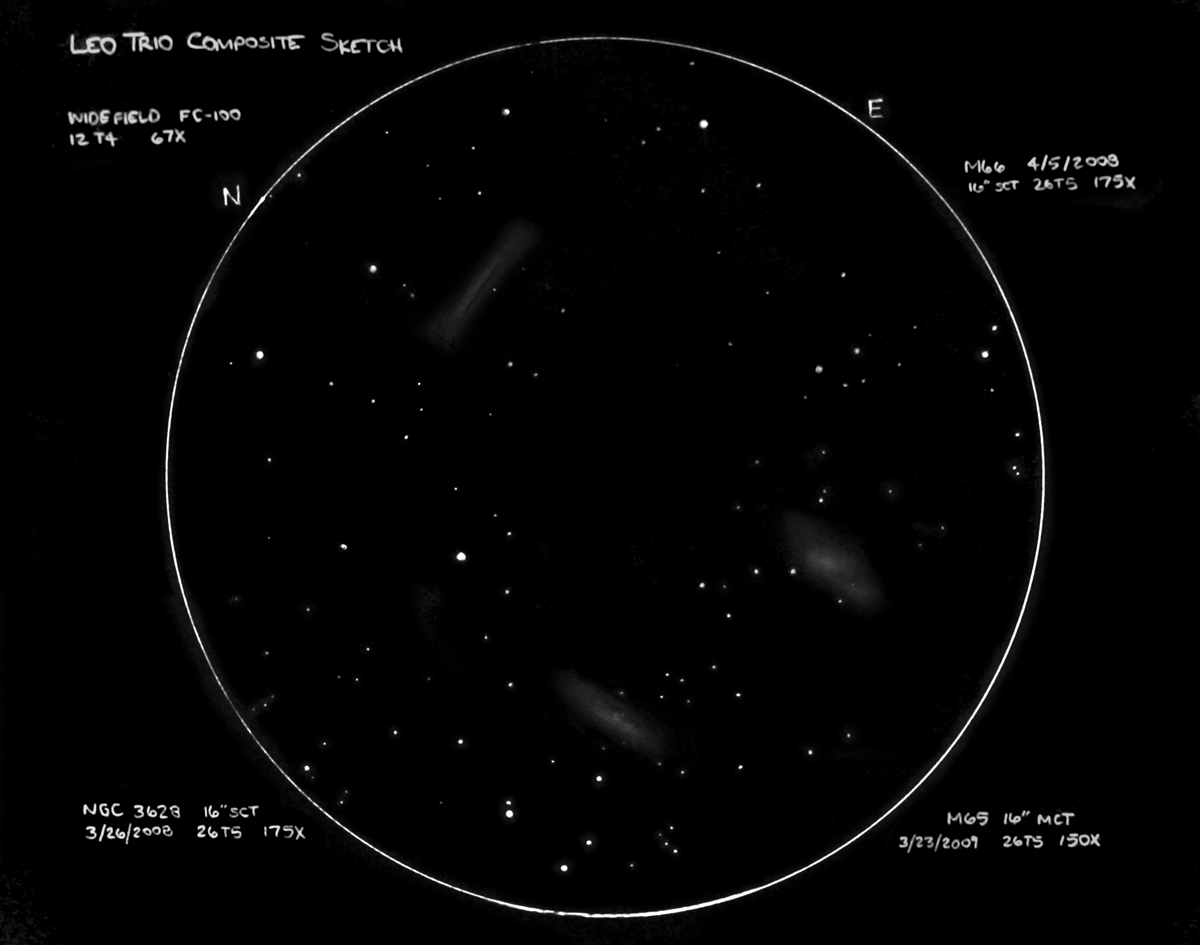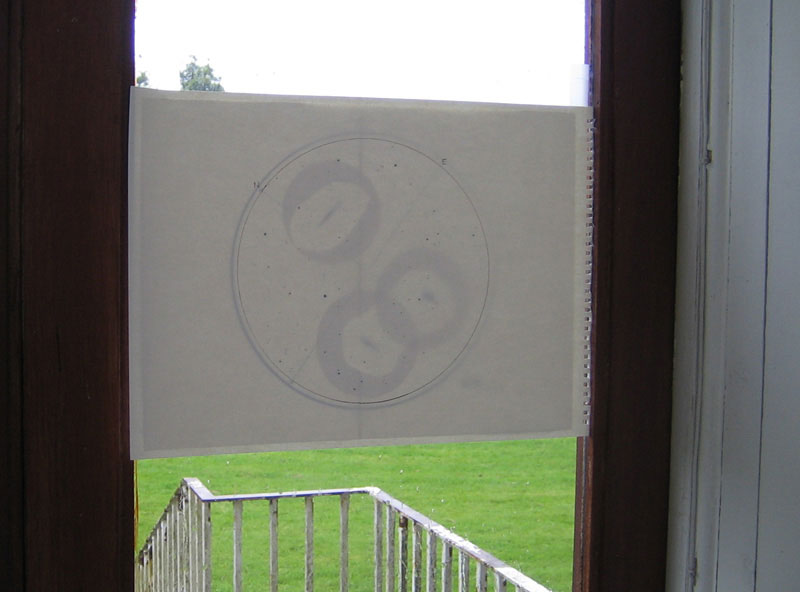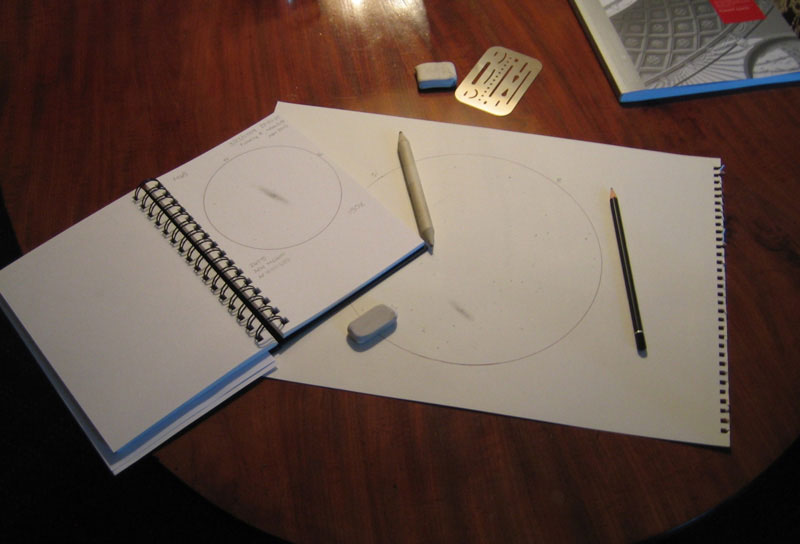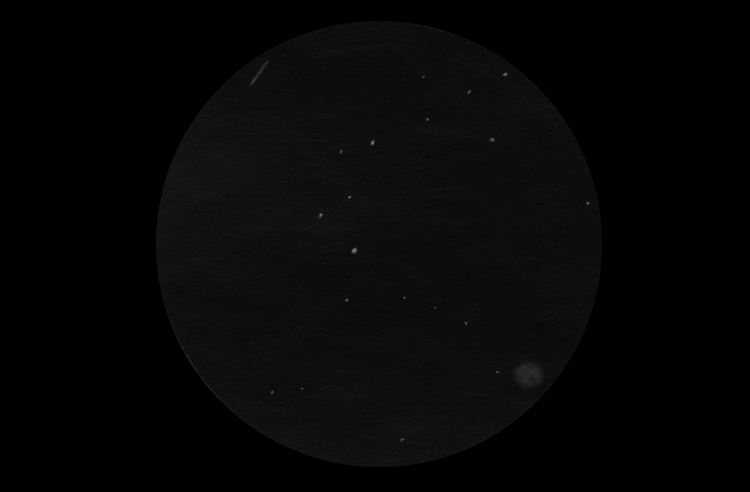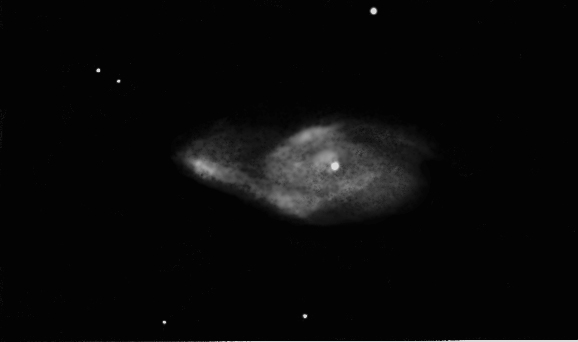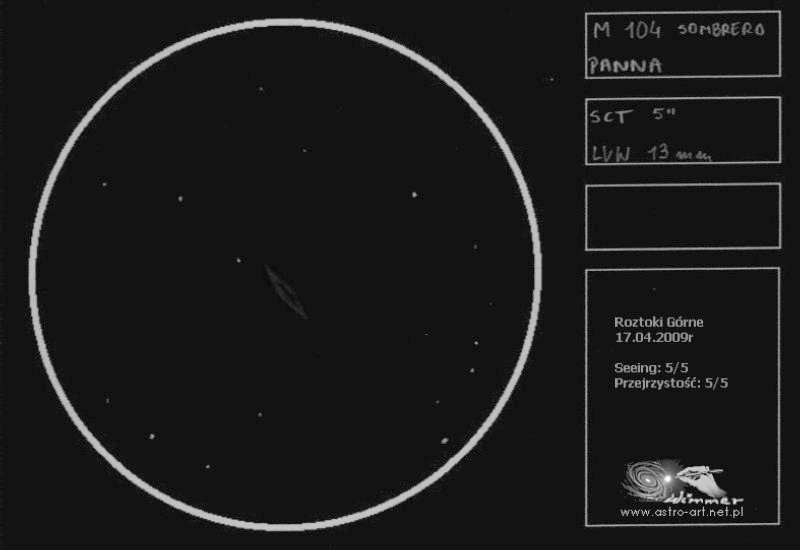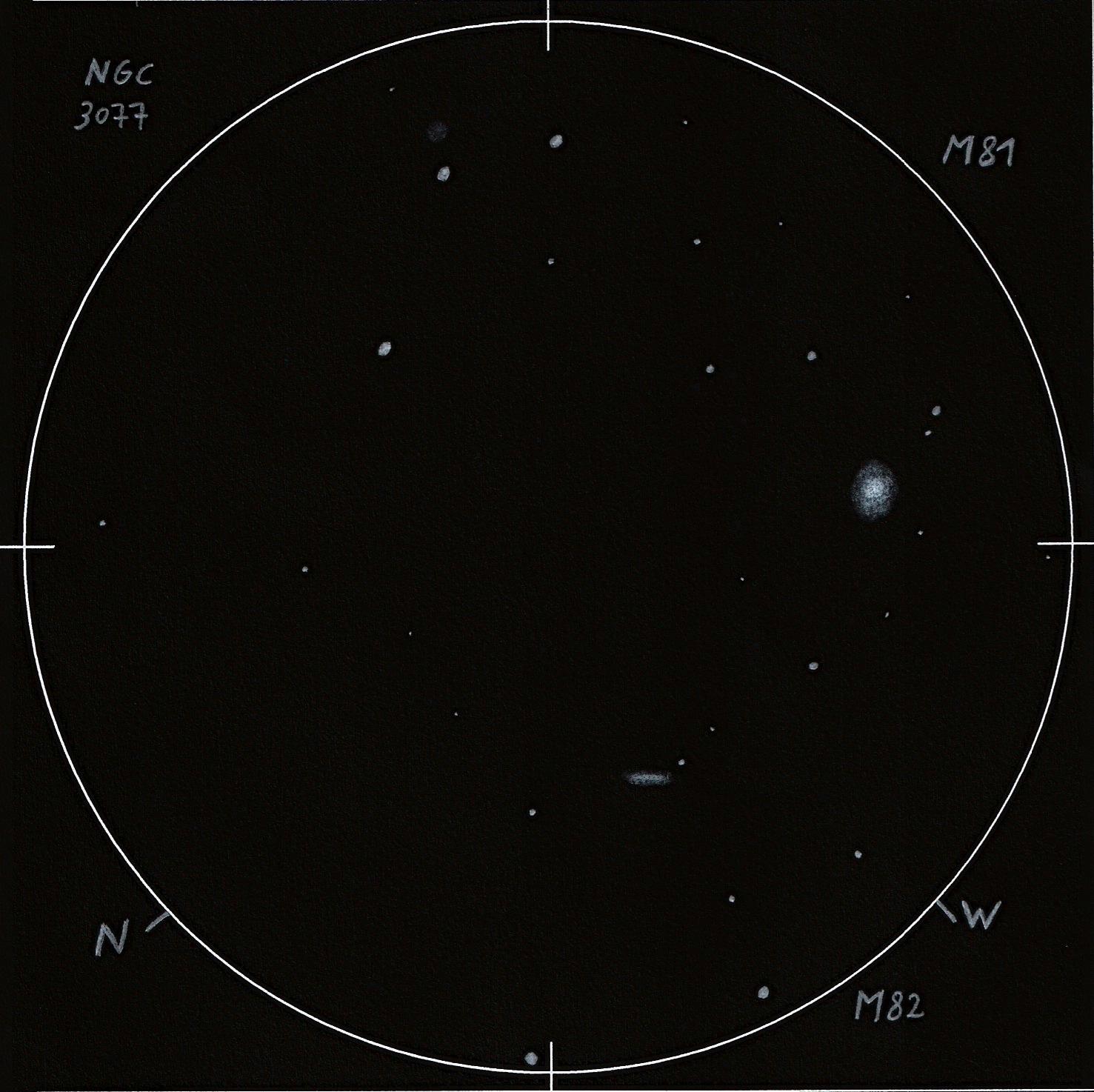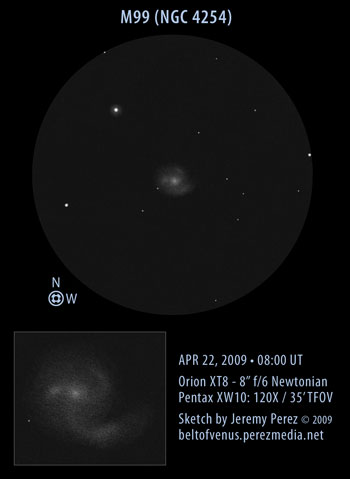
M99 (NGC 4254) Galaxy in Coma Berenices
Sketch and Details by Jeremy Perez
M99 was difficult to examine, but definitely rewarding. It appeared circular and moderately condensed at first glance. I switched from 120X to 240X and back to try to pick out structure. A star on the edge of the galactic disc helped analyze the position of mottling that began to emerge.
A brighter patch consistently exited the core on the northeast side and pointed just north of that star. Sweeping the scope back and forth caused a faint, extended patch to appear on the west side, breaking out of the otherwise circular glow. It contained a brighter patch where it joined the main disc. Finally, a sharply curved, very faint arc emerged on the northwest side, inside the halo. I have GOT to spend time with this amazing galaxy at Anderson Mesa or Sunset Crater.
Object Information:
M99 lies 60 million light years away in Coma Berenices. It was discovered in 1781 by Pierre Méchain. It is also cataloged as NGC 4254, UGC 07345, VCC 0307, CGCG 098-144, MCG +03-31-099, PGC 039578, UZC J121849.6+142501.
Subject M99 (NGC 4254)
Classification Spiral Galaxy (Type SA(s)c)
Position* Coma Berenices [RA: 12:18:49.6 / Dec: +14:24:59.4]
Size* 5.4′ x 4.7′
Brightness* 9.87 vMag
Date/Time APR 22, 2009 – 1:00 AM (APR 22, 2009 – 08:00 UT)
Observing Loc. Flagstaff, Arizona – Home
Instrument Orion SkyQuest XT8 Dobsonian (203 mm dia./1200 mm F/L)
Eyepieces/Mag. Pentax XW10 (120X)
Conditions Clear, calm
Seeing 5/10
Transparency Mag 5.8 NELM
*Sources SEDS; NED; Starry Night Pro Plus 5


